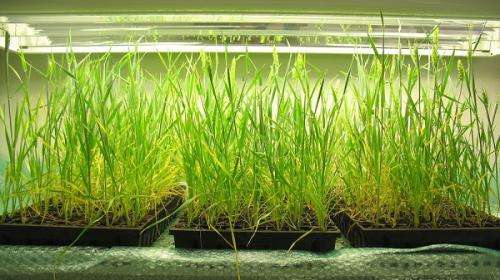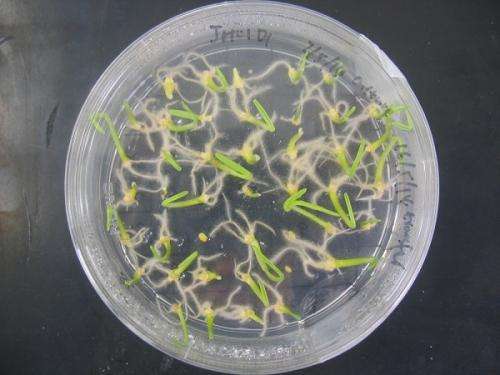How researchers are speeding up seed production for new wheat

An international team of plant geneticists is trialling a rapid method of producing new varieties of wheat and barley ready for field trials.
UWA Associate Professor Guijun Yan says under normal conditions, it takes eight growing seasons to produce the eight generations of a new hybrid to produce a "pure line" of wheat, ready for propagation.
"It's very important for the farmers to produce new cultivars," he says.
"A lot of the time the breeders are doing two things."
These, he says, are the active creation of genetic variations, and the selection of useful variations for breeding.
"However how do we increase the efficiency? That's becoming major research and a major challenge," Prof Yan says.
The new method involves separating the embryo from the endosperm within the seed, and placing it in a growing medium.
This eliminates the 40–45 days it normally takes for a seed to germinate.
The young plant is then quickly forced to flower by stressing it with a combination of high temperature and light; and low water and nutrition.
"Generally when the plant is stressed it tries to flower and produce a seed so it can start the next generation when conditions are good," Prof Yan says.

"We could achieve eight generations of wheat and nine generations of barley [in a year] by recovering the small embryos before the seeds mature.
"And also we quicken the growth of plants so that they can flower within the month."
This shortens the time taken to produce each generation from a whole growing season to 45 days or less.
"This significantly quickens the process so within a year we can produce pure lines we sow in a crop," Prof Yan says.
"Therefore that technology can significantly decrease seasons of breeding so that a grower or farmer can have their new varieties quicker."
Prof Yan says the methodology was first trialled at Hebei Academy of Agriculture and Forestry Sciences in China.
"In China they grow winter wheat and they could achieve about five generations per year," he says.
"We grow spring wheat and we could achieve a quicker outcome.
"Now we are implementing the technology in Australian wheat breeding."
The technique is being used to produce pure breeding lines for Prof John Hamblin's low chlorophyll wheat trials.
"I think this is the first implementation of such a technology in Australia, if not in the world," Prof Yan says.
Provided by Science Network WA





















